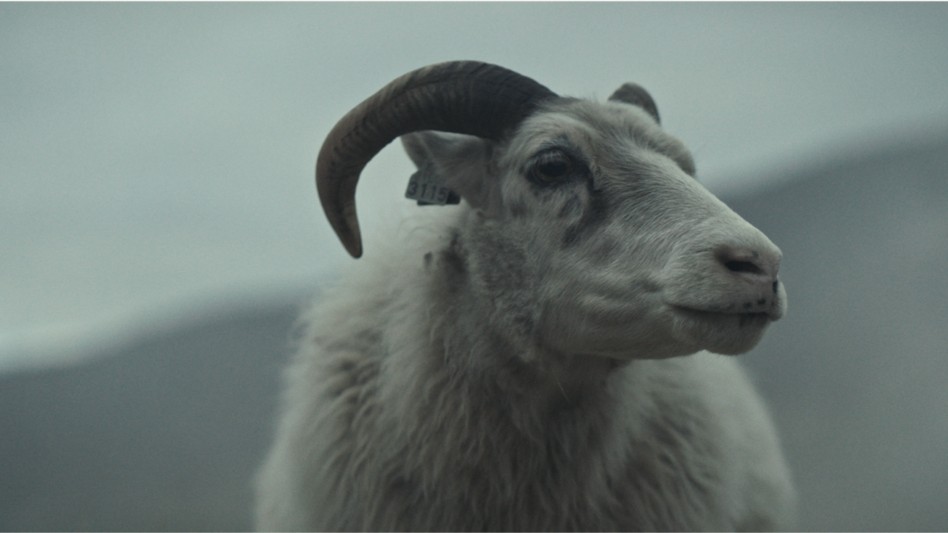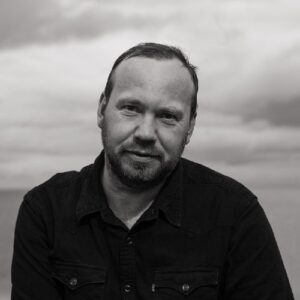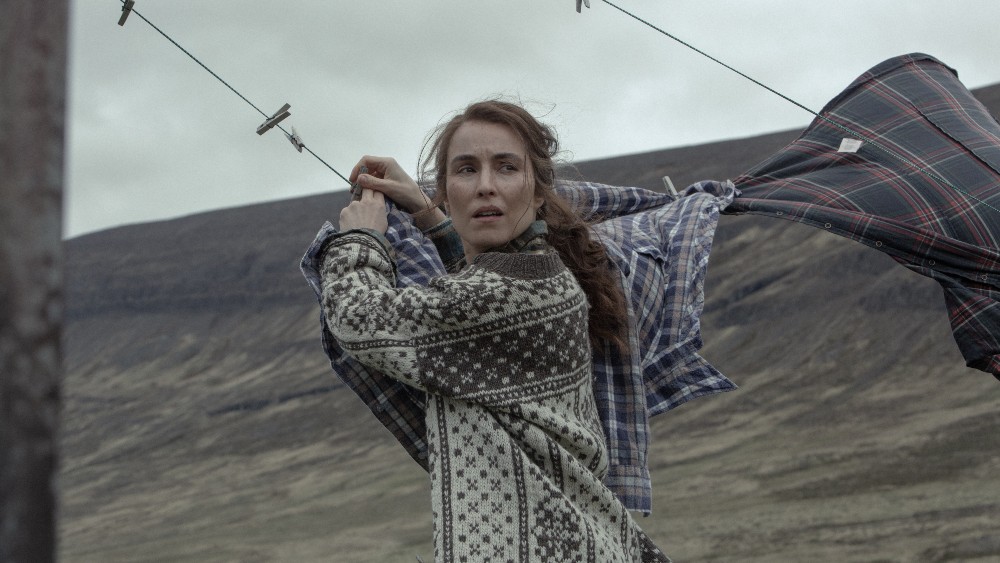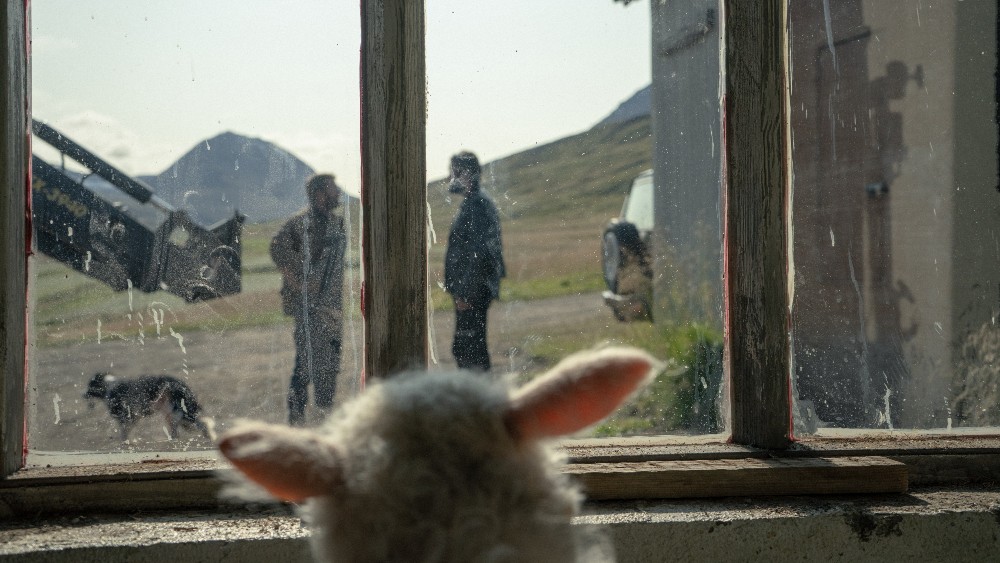
You hear all the time about big studio movies shooting in Iceland to take advantage of the vast landscapes the country has to offer, but there have been very few representatives of the country’s production ecosystem other than possibly Baltasar Kormákur, one of Iceland’s biggest exports.
Valdimar Jóhansson has been involved with some of the bigger studio productions that filmed in Iceland, including Prometheus, Transformers: Age of Extinction, and Rogue One, working in a variety of capacities. He also has directed his first film, Lamb, which premiered at the Cannes Film Festival.
Lamb stars Noomi Rapace and Hilmir Snær Guðnason as married couple Maria and Ingvar, who live on an isolated Icelandic sheep farm sans children. One day, something amazing happens, and a lamb gives birth to a child that the couple decides to adopt as their own. Ingvar’s brother Pétur (Björn Hlynur Haraldsson) then shows up and thinks they’ve gone insane, but there’s also something far more nefarious going on than any of them can imagine.
Below the Line spoke with Jóhansson on the phone for the following interview last week.

Below the Line: I looked at your filmography, and you’ve been working your way up through camera and electrical, as well as doing special effects and a lot of roles in production before directing your first short and now a feature, which is not that common.
Valdimar Jóhansson: I think it’s been so helpful. My first department was runner or PA, and just working in the Icelandic film industry, I really like doing different departments to change sometimes, because probably most of the time, I was in light department and grip, but then I went to special effects or art department. Because the industry in Iceland, the crew it’s just like your family. You know everybody, and because almost everybody from the crew in Lamb, they were just my friends, so everybody was changing departments and helping out with everything. I think it was super nice. Also, I have been working in all these departments,
BTL: Is there any kind of film school in Iceland or do most people learn just by working their way up through the production, as you did?
Jóhansson: Yeah, there is a film school — it’s called the Icelandic Film School. I think it was 2004, maybe ’99, I went to an evening school that was only for like three months, and I moved to Reykjavik from the North. After that, like one year after, I just started working in the industry. Then 2013, I went again to a film school in Sarajevo. It was Bella Tárr, do you know him? He just opened a film school, and that was amazing times because he brought so many interesting people, and they just came and spent like a week there. We just spent the whole day with them sometimes going to the cinema or going for dinner with them also in the evening. For example, it was Tilda Swinton, Carlos Reygadas, Apichatpong [Weerasethakul], Christian Mucha — there were just endless [number] of people. What was also so interesting was to see that they all have a different method of working. I thought that was so good for me to see that afraid of doing what you want to do, or do it your way. You should be brave and do what you really want to do
BTL: How did you start the journey making Lamb? I know you wrote Lamb with another writer, Sjón, had he written a script and you came on to direct from there, or did you write it with him?
Jóhansson: I really wanted to make a feature film, and I had been doing a sketchbook where I had a lot of paintings and photos, and also, I did a lot of drawings, for example, of this creature. I had the mood of what I wanted to do, but the story was not very clear. Sjón, he is one of my favorite writers. In his books, he uses a lot of a mythology, and also, he works with Icelandic folk tales and I just thought he could be the right person. My producers, they introduced me to Sjón, and I showed him my sketchbook. After that, we just started meeting once a week, where we just talked about it for maybe three or four hours, and we did that for many years. After probably five years, we did a treatment and when my producers were happy, Sjón took over and wrote the script.

BTL: You mentioned that you moved to Reykjavik, so were you in a more rural area with farming before that?
Jóhansson: I came from a very small village. For example, in my class, I think we were three [people], but my grandparents were seed farmers. They lived maybe three or four kilometers from the village, so I was always spending my childhood there.
BTL: I was wondering, because Noomi and Hilmir seemed to take very well to their farming duties. I wondered whether you had some experience you could share with them to get them up to speed? Especially seeing them with the lamb, and Noomi driving a tractor was pretty impressive.
Jóhansson: Noomi is a trooper — she went all in. Both the scenes where she’s driving the tractor and delivering lamb, it was the first day, because she came only one day before shooting. But she grew up at the farm in Iceland, and they had horses and I think two pigs, a dog and a few sheep. She had not delivered a lamb before, but she just saw the farmer do it, and then she just did it. She’s amazing. [laughs]
BTL: Obviously, one of the benefits of filming in Iceland is you have a lot of space to find locations, so what’s the process for finding and shooting in the places you shot?
Jóhansson: After the first draft, then I did the storyboards. I spent a few months doing a storyboard for the whole film, and I had some special farm in mind. I even made it out of clay. I think we drove probably two times around Iceland. We were just sending people photos and drawings that we wanted to have a farm like this. In the end, my brother, he found this farm, but there are not so many farms there. I also wanted to have something that I could almost shoot 360 and shoot out of the window from the farm. He found this farm, and it didn’t have the layout. It didn’t look like I wanted, but the layout was so interesting that we thought it could be even better. Because we had these amazing mountains around it, and after my production designer and his team did this amazing work, I was so happy. We decided to do it there, because there was nothing around, and there was hardly even a phone connection.

BTL: You obviously have this experience in the Icelandic filming community, so you knew a lot of people, but how big a crew did you put together for the movie?
Jóhansson: I think probably the crew was 35 [people] or something.
BTL: It must have been hard to keep so many people out of the shot if you were trying to do 360 degree shots.
Jóhansson: It is rather isolated, but it was not difficult to hide the crew, because we shot so much just in the farm, and it was not difficult.
BTL: I think you finished shooting the movie before the pandemic hit. Did you finish all the post as well?
Jóhansson: We finished shooting everything, but we were in post-production, but after this COVID things, we could spend more time working on it. There were no cinemas or nothing, so we just used the time working on that.
BTL: I obviously don’t want to spoil anything since there are some nice surprises, but a big part of the movie is the baby lamb that the couple adopts as their child. Was that something you were able to create practically, or did you have to use visual effects to create that amazing illusion?
Jóhansson: We used so many elements. We were working with ten children and four lambs, and also puppets, and it was very time-consuming, because of all the scenes with Ata, we had to do maybe starting with puppets, and then we had to shoot it with children, and then real lambs. I think my actors were great, because they were so patient. Somehow, it came to life on set, because we had a very strong wish on how it could be.
BTL: Do you consider Lamb a horror movie? Or fantasy? What are your thoughts on its genre?
Jóhansson: For me, we always planned to make a classical story with one surrealist element. For me, it’s not a horror film. I think people can just put it in many genres, but at least for me, it’s just like a classical story.
Lamb will hit theaters in select cities on Friday, October 8. All photos courtesy of A24, except where noted.





